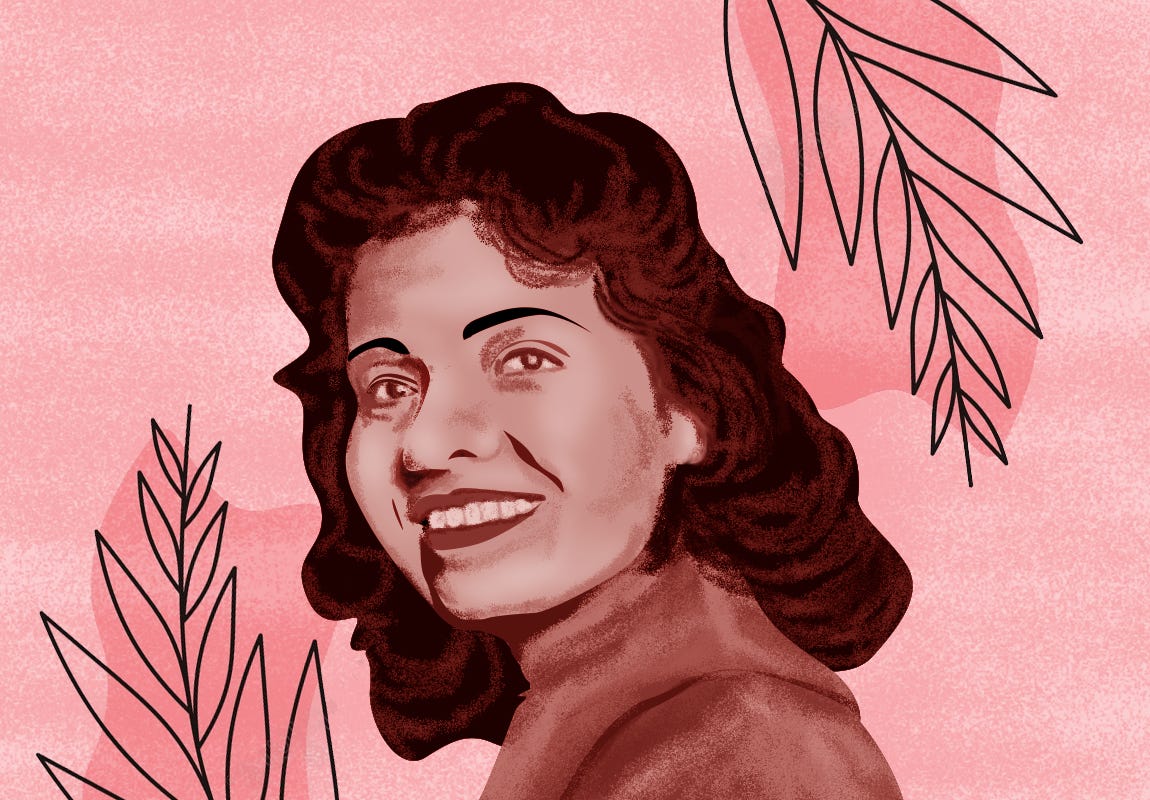Diane Nash: Non-violent warrior against racial segregation
Diane Judith Nash is a civil rights activist who co-founded the Student Non-violent Co-ordinating Committee (SNCC).
Diane Nash was born on May 15, 1938, in Chicago, to Leon and Dorothy Bolton Nash. She was born at a time when Jim Crow laws, or racial segregation, were legal in the United States. During that time, Blacks and Whites lived in different neighbourhoods, attended different schools, and sat in different sections of buses, trains, and movie theatres in the South and other parts of the United States.
Nash’s grandmother, Carrie Bolton, took care of her when she was a small child as both her parents were working. Her father served in World War II, and her mother worked as a key punch operator during wartime. Her parents got divorced after the war. Then her mother married John Baker, who worked as a waiter for the Pullman railroad company. Baker was a member of the Brotherhood of Sleeping Car Porters. It was the most influential union for African Americans. This union gave workers higher pay and more benefits.
Racial segregation experienced in Nashville inspired her to become an activist, and she oversaw non-violent protests on the Fisk University campus.
Diane Nash’s stepfather’s job helped her get a high-quality education. She attended Catholic and public schools before graduating from Hyde Park High School in Chicago. Then she attended Howard University in Washington, D C. She was then transferred to Fisk University in Nashville, where she majored in English.
In Nashville, Nash experienced the Jim Crow system. “I started feeling very confined and really resented it. Every time I obeyed a segregation rule, I felt like I was somehow agreeing I was too inferior to go through the front door or to use the facility that the ordinary public would use,” she said about her experience at Nashville.
Racial segregation experienced in Nashville inspired her to become an activist, and she oversaw non-violent protests on the Fisk University campus. Even though there were some difficulties at the beginning, her family supported her efforts.
Attracted by the philosophy of non-violence associated with Mahatma Gandhi and Martin Luther King Jr, Dianne Nash started attending classes on non-violence given by James Lawson, who had gone to India to study Gandhi’s methods. After her non-violence training, she led Nashville’s lunch counter sit-ins over a period of three months in 1960. Students led by Nash went to the Whites-only counter and waited to be served. When denied, they would ask to speak with the managers and were often arrested.
On March 17, 1960, four students, including Dianne Nash, were victorious in the sit-in campaign as the Post House Restaurant served them. The sit-ins spread to nearly 70 US cities. In the same year, about 200 students who took part in the sit-in campaigns travelled to Raleigh for an organising meeting. The young activists formed the Student Non-violent Co-ordinating Committee. Nash left college to oversee the organisation’s campaign.
Sit-in campaigns continued in the next year, and, in 1961, Dianne Nash and three other SNCC leaders were arrested for supporting the ‘Rock Hill Nine’ or ‘Friendship Nine’. It was a group of nine students who got incarcerated after a lunch counter sit-in in South Carolina. The group did not pay for bail as they believed that paying fines supported the practice of segregation.
Dianne Nash and James Bevel organised marches to support voting rights for African Americans in Alabama.
Even though SNCC mainly focused on Whites-only lunch counters, they also wanted to end the segregation on inter-state travel. Black and White civil rights activists travelled together in interstate buses, protesting against Jim Crow laws. They came to be known as freedom riders. However, after an attack by a White mob in Birmingham, the organisers decided to call off freedom riders. Dianne Nash insisted that it should continue, and she started to arrange freedom rides from Birmingham to Jackson and Mississippi.
The year 1961 was important in Nash’s personal life, too, as she married James Bevel, who himself was a civil rights activist. The marriage did not slow down her activism. While she was pregnant with her first child Sherrilynn, Dianne Nash was sentenced to two years in prison for conducting civil rights training for local youth. She only had to serve just 10 days in jail. She believed that her activism would make the world a better place for her children.
Dianne Nash’s work drew the attention of President John F. Kennedy, who selected her to serve on a committee to develop a national civil rights platform. It later became the Civil Rights Act of 1964.
Dianne Nash and James Bevel organised marches to support voting rights for African Americans in Alabama. Police brutally attacked the peaceful protest, and, stunned by the images of the attack led by the law enforcement agents, Congress passed the 1965 Voting Rights Act. Nash and Bevel were awarded the Rosa Parks Award for their work to ensure the voting rights of African American people. The couple got divorced in 1968.
After the civil rights movement, Dianne Nash returned to Chicago, her hometown, where she lives today. In 2003, she won the Distinguished American Award from the John F. Kennedy Library and Foundation. In 2008, she was awarded the Freedom Award from the National Civil Rights Museum.
Dianne Nash appeared in the documentaries Eyes on the Prize and the Freedom Riders. In the civil rights biopic Selma, which was released in 2014, actress Tessa Thompson portrayed Nash. Her biography, Diane Nash: The Fire of the Civil Rights Movement, was written by historian David Halberstam.


